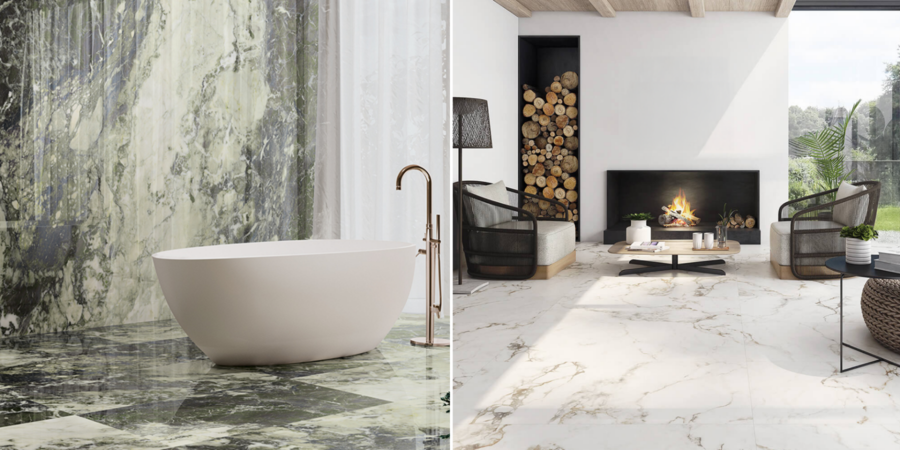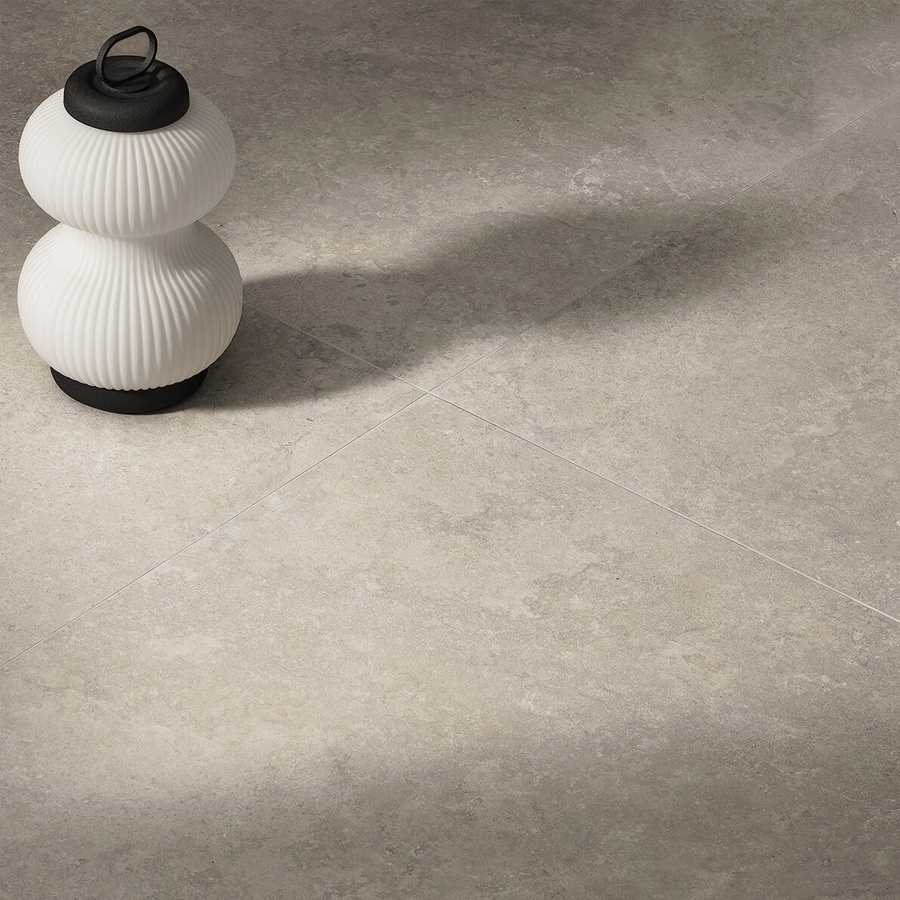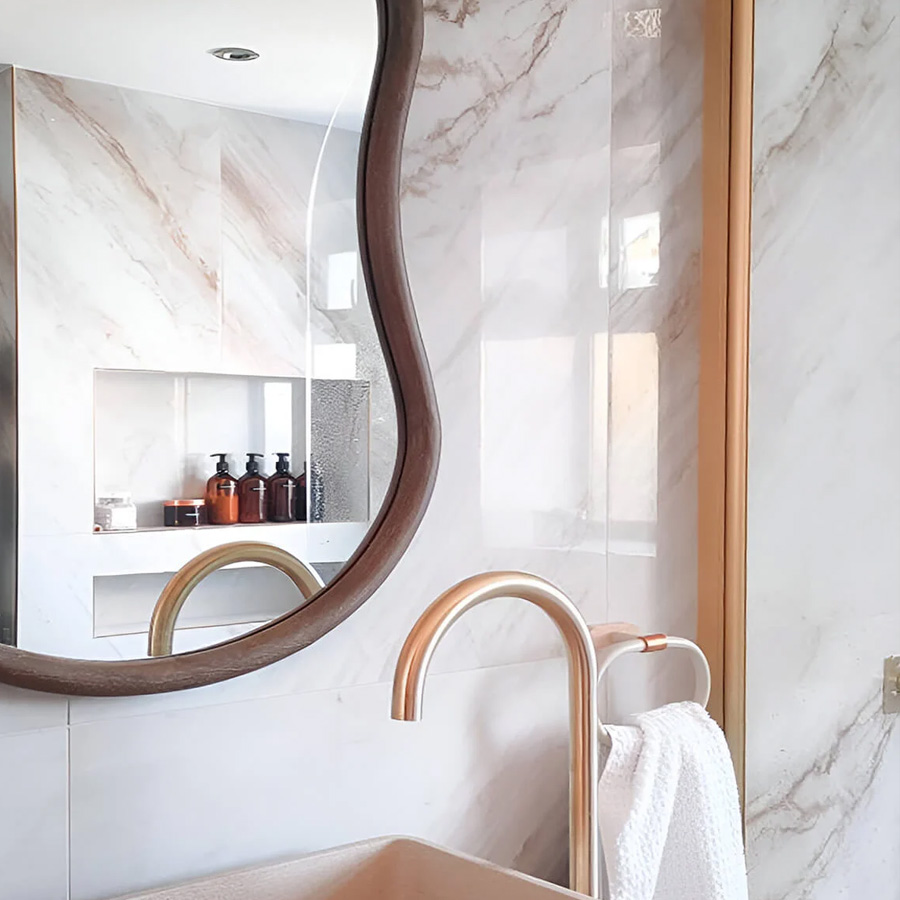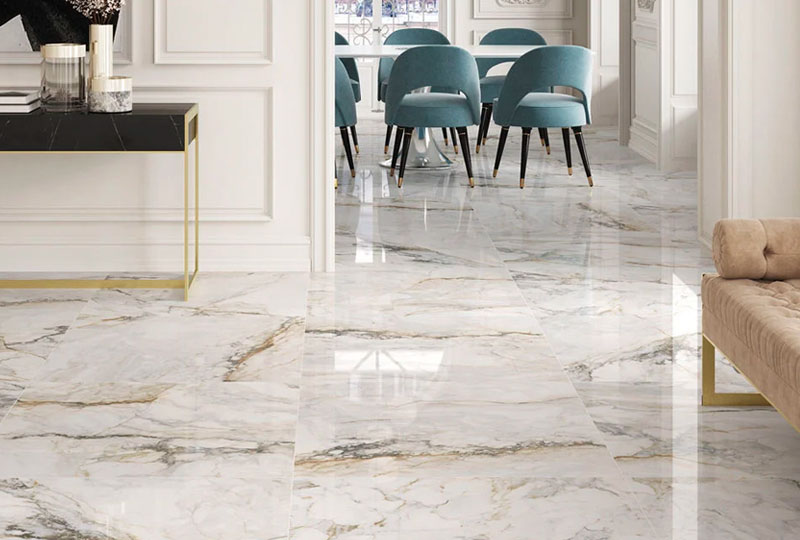
If you’re just starting out on your tiling journey, you’ve likely noticed the sheer volume of different tile options available to you on the market. From natural stone tiling to porcelain tile options in shades of every colour available, there’s a lot to consider at all stages of the tile-buying process.
However, alongside these material and tonal options, you’ve likely also come across the terms matt tiles and polished tiles when researching your options, both of which can provide a distinct and unique finish to your tiles.
But what exactly is the difference between matt and polish tiles, and where are they best suited for use in your home? Keep reading to learn more about using matt vs polished tiles, the benefits and drawbacks of each, and suggestions of what sort of matt and polished tiles you may want to use to rejuvenate your home décor.
What’s the difference between matt and polished tiles?
When it comes to matt vs polished tiles, the main difference lies in their amount of gloss and reflective properties. Matt tiles typically have little or no sheen to them, allowing them to provide a more natural look and keep unintentional light reflection to a minimum.
Polished (or glossy tiles), on the other hand, are almost always buffed to a shine, being highly reflective and favoured by homeowners looking to brighten up their kitchen tiles or bathroom tiles by exaggerating the level of light being thrown around the room.
What is honed and filled tile flooring?
Often falling under the umbrella of tile finishes, honed tiles and filled tiled flooring are two other features that homeowners can consider, typically with a matt or polished finish.
Honed tiles are most often associated with natural stone tiles, with a honed finish specifically referring to any tile that has a smooth, silky, yet natural texture while being matte in style.
As for filled tiles, such a finish refers to any stone that has had its holes, pockmarks, and voids filled in with resin or filler. This creates a smooth and flat surface that’s comfortable to walk on while also being relatively reflective, depending on the level of buffing the tile was exposed to during the manufacturing and sealing stage.
![]()
What are the advantages of matt and honed tiles
When it comes to choosing matt vs polished porcelain tiles, the lack of reflectivity natural to honed and matt finishes give tiles styled in this way several distinct advantages over their shinier cousins.
For one thing, matt tiles are an excellent choice for anyone seeking to create a cosier atmosphere in their home, leaning hard towards the rustic and farmhouse aesthetic that’s so very popular in modern trends.
Not only that, but their duller tones make them ideal for high-traffic zones in your house, such as kitchen floor tile spaces, thanks to their durable and textured design, which gives them greater levels of grip underfoot.
Finally, when looking at honed vs polished tile installations, honed tiles can still give you that elegant and refined look so common to polished tiles, while still keeping that intimate feeling that is so prominent with matt layouts.

What are the downsides of matte tiles?
While there is a lot to like about matt tiles, such a finish can come with a few downsides, the main one being that matt tiles are slightly rougher to the touch. On top of this, the muted finish of matt tiles makes them ill-suited to brightening smaller spaces.
What are the advantages of polished and filled tiles?
Although matte tiles have several advantages over their glossy counterparts, that’s not to say that polished tiles don’t have their perks. Indeed, polished tiles lean hard into the contemporary and luxury aesthetic, making them ideal for those wanting to break away from traditional tiling décor.
Alongside this, their bright and reflective nature can make even the smallest rooms feel that much bigger by visually enhancing the space in question, not to mention excelling at drawing the eye to certain focal points in a room.

Volakas Bronze Polished Porcelain
What are the downsides of polished tiles?
Much like matt tiles, however, there are some downsides that come with using polished tiles in your home, namely their tendency to be smoother and less textured, which can make them quite slippery in wet environments. Polished tiles do also tend to need sealing during installation, as the polishing process does make the surface more porous than matt tiles, meaning they do have an extra maintenance step.
Matt vs polished tiles: Where to use them in your home?
So, now that we’ve covered what matt and polished tiles are, and what their own unique advantages and disadvantages are, where in your home is each type of tile finish best suited for installation?
Well, rather than matt and polished tiles suiting specific rooms more than others, whether you should pick one finish over the other really comes down to the style and aesthetic you’re going for, as well as the general functionality of the tile type.
For example, when looking at matt or polished tiles for a bathroom floor, matt tiles are almost always the better option due to their textured surface, which gives your feet a much better grip when wet.
However, for rooms lacking enough natural light, a good set of well-buffed polished tiles can do wonders to bring such a space to life, even if the external light is only coming from one source.
As for an aesthetic preference, matt tiles are more rustic and traditional in their décor, meaning they lean more towards older styles of tile design, whereas polished tiles offer a more luxurious visual appeal while capturing the outgoing feel of many contemporary trends.
Of course, if you’re after a tiling aesthetic that’s somewhere in between, then you can always combine matt floor tiles with polished wall tiles for a blend of the two, giving you the best of both worlds!

Calacatta Gold Polished Porcelain
Find matt and polished tiles in our range
And there you have it, those are the main differences between matt vs polished tiles, as well as what to consider when deciding on which finish to install in your home. But should you have any more questions on the topic, then don’t hesitate to get in touch with the Stone Superstore team today.
Our experts are more than happy to answer and advise on all your tiling needs, and you can also find plenty of other useful information to help you find the right flooring with our collection of tile guides in our inspiration hub.
And, naturally, if you already know what type of tile you want to buy, head over to the Stone Superstore range to see exactly what we have on offer. With such a wide-ranging selection, we’re sure to have something in our collection to suit your tastes.

